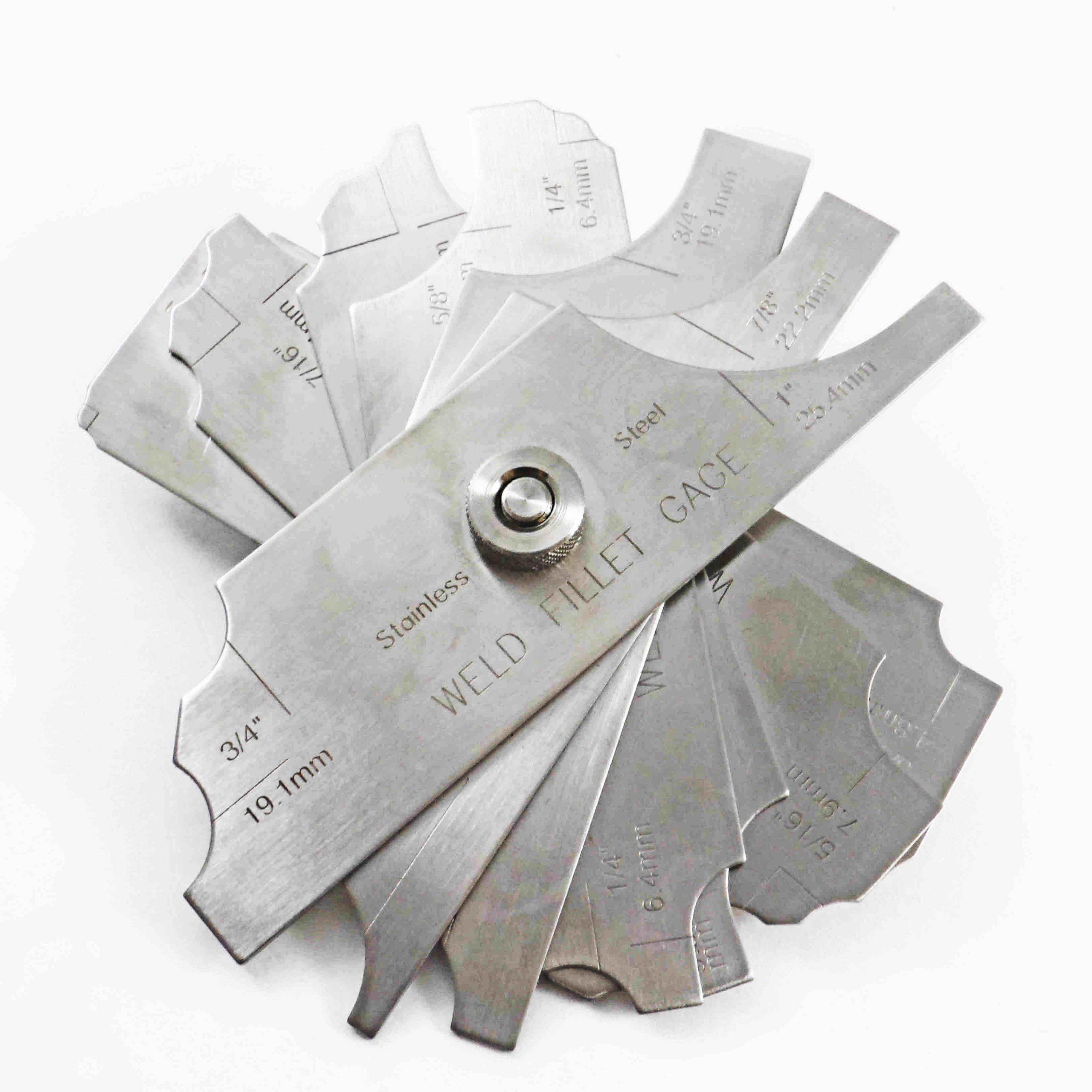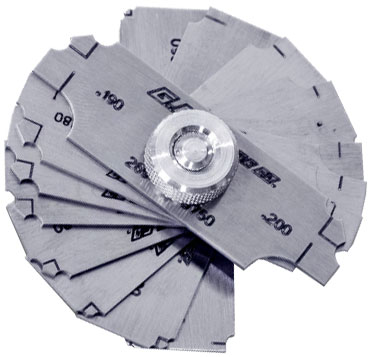Mastering Gauge Fillet Welds: Tips for Perfect Measurements and Execution
Mastering Gauge Fillet Welds: Tips for Perfect Measurements and Execution
Blog Article
Innovative Strategies to Fillet Weld Evaluation and Testing: Enhancing Weld High Quality and Compliance Specifications
In the world of welding, the high quality and stability of fillet welds play an important duty in making sure the architectural strength and dependability of various industrial parts. With the consistent drive for enhanced efficiency and compliance with rigorous requirements, the expedition of ingenious methods to fillet weld assessment and screening has actually become necessary. As sectors advance, the typical methods may no more be enough in fulfilling the demands of modern welding applications (Gauge Fillet Weld). By welcoming innovative technologies and techniques, a new horizon of opportunities emerges in the world of weld quality analysis and adherence to compliance requirements.
Advanced Non-Destructive Testing Methods
Making use of cutting edge modern technologies, advanced non-destructive testing techniques play a crucial function in making certain the integrity and quality of fillet welds. These techniques, such as phased selection ultrasonic screening (PAUT) and magnetic particle testing (MPT), deal thorough insights into the weld's internal structure without causing any damage to the material. PAUT, as an example, uses several ultrasonic aspects to check the weld from different angles, supplying a thorough visualization of possible flaws like lack of fusion or cracks.
By utilizing these innovative non-destructive testing techniques, weld assessors can accurately analyze the high quality of fillet welds, ensuring compliance with sector requirements and laws. The capability to detect problems early on not only improves weld top quality however likewise protects against pricey rework or failures in architectural integrity, underlining the value of these ingenious screening strategies in welding evaluations.
Robotics and Automation in Examination

The assimilation of robotics and automation has actually transformed the assessment procedure for fillet welds, enhancing effectiveness and precision in quality evaluation. Robotics supply precise control and repeatability in examining welds, making certain trustworthy and regular outcomes. Automated systems can be programmed to follow particular assessment courses, making certain thorough coverage of welds and reducing the risk of human error.
Robotic examination systems furnished with advanced sensing units can discover and measure weld attributes with high accuracy, providing thorough data for evaluation. These systems can identify defects such as splits, lack of fusion, and porosity, enabling prompt corrective actions to be taken. In addition, robotics and automation permit real-time data collection and evaluation, giving prompt feedback to drivers and helping with fast decision-making processes.
In addition, using robotics and automation in fillet weld examination enhances total productivity by minimizing inspection times and boosting examination throughput. By improving the examination process, makers can make certain weld quality and compliance standards are fulfilled efficiently, eventually causing set you back savings and enhanced product high quality.
Making Use Of Artificial Intelligence for Analysis
Expert system plays a crucial role in enhancing the effectiveness and accuracy of analysis in fillet weld assessment processes. By taking advantage of the power of AI, examiners can streamline the analysis of weld quality and compliance requirements, resulting in a lot more reputable and exact results. AI formulas can rapidly process large amounts of data from weld inspections, discovering problems or disparities that may be challenging to relate to the nude eye. This sophisticated innovation allows real-time monitoring of weld quality, permitting for prompt restorative actions to be taken if any concerns are discovered.
Moreover, AI systems can pick up from past inspection data, consistently enhancing their ability to determine potential flaws and variances in fillet welds. This adaptive discovering capability improves the overall top quality control process, minimizing the likelihood of human error and making sure that welds meet the needed criteria. By integrating expert system into fillet weld evaluation, sectors can over here achieve higher levels of effectiveness, uniformity, and conformity in their inspection practices.
Portable Equipment for On-Site Examination
Enhancing area evaluation effectiveness, the fostering of mobile devices revolutionizes on-site assessment processes for fillet welds. These tools use adaptability and convenience, allowing assessors to carry out complete examinations in different places, consisting of remote or tough settings. Portable devices such as ultrasonic testing tools, magnetic particle examination tools, and electronic radiography systems supply real-time information and high-resolution imaging capabilities, enabling fast decision-making and immediate feedback on weld top quality.
One significant benefit of mobile devices is their capability to enhance assessment procedures, decreasing downtime and enhancing overall performance - Gauge Fillet Weld. Assessors can quickly deliver these devices to various work websites, getting rid of the requirement for transferring heavy machinery or components to off-site centers. Furthermore, the mobility of these tools promotes cost-effectiveness explanation by decreasing transportation expenses and increasing assessment timelines
Furthermore, the use of mobile tools for on-site inspection advertises positive quality assurance procedures, as examiners can without delay determine and address any kind of possible welding defects or inconsistencies. By incorporating these ingenious technologies right into on-site inspection methods, welding professionals can make sure conformity with industry requirements and enhance weld high quality, ultimately causing improved structural honesty and safety in different welding applications.
Assimilation of Data Administration Equipment

Having actually enhanced on-site examination processes with the application of portable tools, the following stage entails the seamless combination of information monitoring systems to better enhance performance and information analysis capacities in fillet weld inspection and testing. By integrating data administration systems right into the examination process, companies can improve information collection, storage space, and evaluation. This integration enables real-time tracking of weld top quality, prompt identification of problems, and timely decision-making to correct any type of problems that might develop throughout the examination procedure.
Information monitoring systems play a crucial role in streamlining evaluation data, helping with simple gain access to for licensed personnel, and guaranteeing data integrity and security. Via the assimilation of these systems, assessors can produce detailed reports, track historical data for trend evaluation, and boost general process efficiency. The integration of information administration systems allows seamless communication in between different stakeholders entailed in the examination process, fostering cooperation and enhancing overall top quality control procedures. Ultimately, the assimilation of data monitoring systems serves to boost the requirements of fillet weld inspection and screening, guaranteeing conformity with industry guidelines and enhancing weld high quality.
Conclusion
Finally, ingenious strategies to fillet weld evaluation navigate to these guys and screening have actually considerably boosted weld quality and compliance standards. Advanced non-destructive testing techniques, robotics, automation, fabricated knowledge, mobile devices, and information management systems have transformed the way weld assessments are conducted. By utilizing these technologies, industries can ensure that welds satisfy the needed quality criteria and regulations, ultimately boosting total performance and safety and security in welding procedures.

Having optimized on-site examination procedures with the usage of portable devices, the next stage includes the smooth combination of data monitoring systems to additionally enhance performance and data evaluation abilities in fillet weld inspection and screening. Ultimately, the assimilation of data monitoring systems serves to boost the requirements of fillet weld examination and testing, ensuring compliance with sector policies and boosting weld high quality.
Report this page